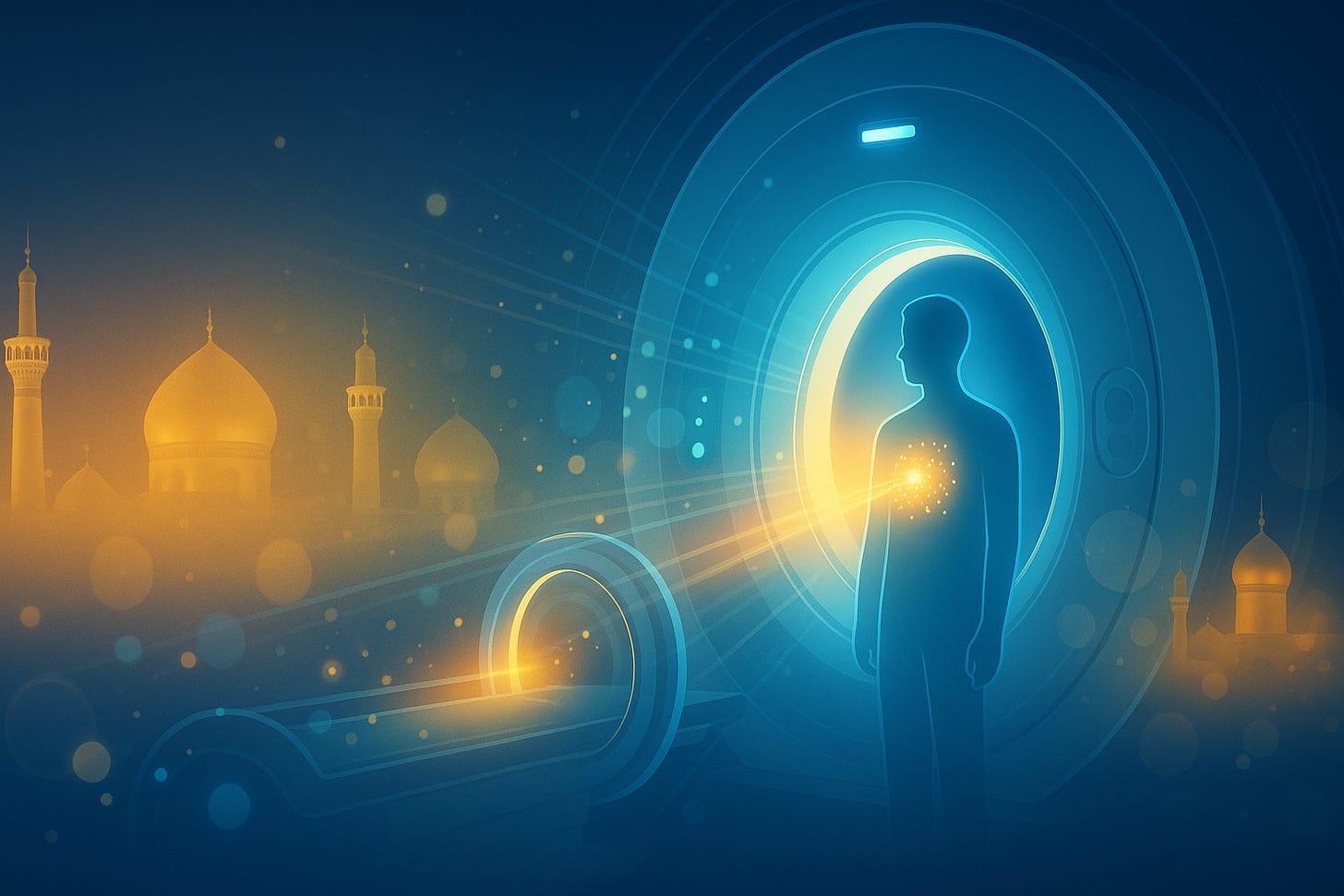Light of Healing: Iran’s Journey to Becoming a Leader in Nuclear Medicine
How science, faith, and determination came together to bring hope to patients fighting serious illness
When people think of Iran, many think first of the holy shrines and the millions of visitors who travel every year to places like Mashhad, Qom, and Shiraz seeking peace, prayer, and spiritual healing. But alongside this sacred path, another kind of healing has grown — a medical journey built on science, dedication, and service to humanity.
Over the past decades, Iran has become one of the world’s leading countries in nuclear medicine — a type of advanced medical treatment that uses special radioactive materials (called radiopharmaceuticals) to diagnose and treat diseases such as cancer, heart disease, thyroid disorders and neurological problems.
A journey built through difficulty
Many years ago, Iran relied on other countries for medical isotopes and equipment, and when sanctions blocked supplies, cancer patients faced serious delays in treatment. Instead of giving up, Iranian scientists, doctors, and engineers worked together to build the entire system from the ground up.
Today, Iran is recognized as one of the top three countries in the world in nuclear medicine development and radiopharmaceutical production. More than 200 nuclear-medicine centres now operate across the country, meaning people from every region can receive advanced care without needing to travel far or wait long.
Hospitals are equipped with modern imaging systems such as:
PET-CT scanners
SPECT scanners
Cyclotrons, which are special machines that create medical isotopes inside Iran
These technologies allow doctors to see deep inside the body and detect cancer at early stages, when treatment is most successful.
Major scientific achievements
Iran has developed more than 20 different types of radiopharmaceuticals, many of which were once only available from a handful of countries. These medical materials are now used to treat thousands of patients every year — not only in Iran but also exported to other countries.
One of the most important breakthroughs is a Rhenium-188 treatment for non-melanoma skin cancer, which uses a cream instead of surgery or radiation machines. Clinical trials have shown about 94% success, offering an easy and gentle treatment for patients.
Another major achievement is the production of Tilmanocept, a special medicine used during cancer surgery to help surgeons find damaged lymph nodes while protecting healthy tissue. Before this, only a few countries in the world made it.
These advances show that Iran has moved from being dependent on others to becoming a source of healing for many.
Healing for body and soul
For many pilgrims who visit shrines like Imam al-Ridha (A), Lady Masoumeh (A) and Shah Cheragh (A), the journey is not only spiritual. Some carry medical reports and prayers for loved ones suffering from cancer or serious illness. Now, they find that faith and treatment exist side by side.
A pilgrim may visit the shrine in the morning for dua and peace, and later sit with a specialist in a nearby hospital. This brings comfort to the heart: knowing that both the spiritual and the scientific means are available in the same place.
It is a reminder that:
Allah is the true Healer, and knowledge is one of His gifts.
A gift to humanity
Iran’s success is not only for itself. Radiopharmaceuticals produced in Iran are now shared with other countries, helping patients who would otherwise struggle to access treatment. In a world where many regions lack cancer-care facilities, Iran’s work serves as a bridge of mercy.
The story of Iran’s nuclear-medicine journey is a story of hope — of turning hardship into strength, and turning science into service.
Conclusion
Healing can arrive in many forms. For some, it is the peace found in prayer at holy shrines. For others, it is the medical care that renews life and restores strength. In Iran, these two paths meet — and together they remind us that every step toward healing is a step toward God’s mercy.
For anyone travelling with prayers for a loved one, or searching for hope when the world seems dark, Iran’s journey shows that light can shine through science just as it shines through faith.


